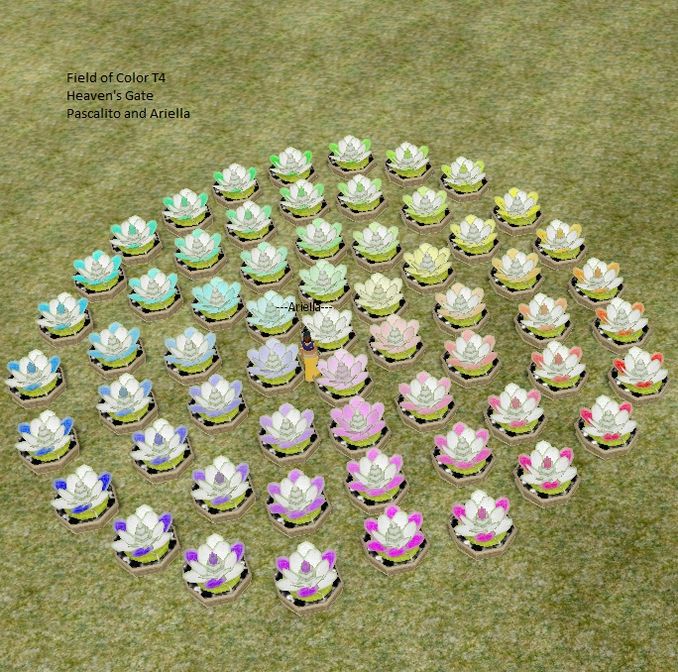The Wiki for Tale 5 is in read-only mode and is available for archival and reference purposes only. Please visit the current Tale 11 Wiki in the meantime.
If you have any issues with this Wiki, please post in #wiki-editing on Discord or contact Brad in-game.
Genetics for Dummies
Gene -> Gene Sets -> Genomes
A gene is a basic physical unit of heredity. A gene in ATITD is named as a color. A correlaton might be in human DNA where there are 4 bases, adenine, cytosine, guanine, thymine. Each gene color is abbreviated to one letter for ease of use but DO NOT get color genes confused with gene sets that make colors in flowers. Example: Yellow or Y
A gene set is one or more genes in a specific sequence that controls a plant's physical characteristics. Example: Green Orange Orange Orange or GOOO which colors an outer petal of a lily one shade of magenta
One or more genes or gene sets form a linear sequence we will call a genome. Example: Vampire Sea Lily genome KIYIYIOIYIOIOK
Genes and their abbreviations:
| Gene Color | Abbreviation | Used In | Not Used In |
| Black | K | All Plants | |
| Red | R | All plants | |
| Orange | O | All plants | |
| Yellow | Y | All plants | |
| Green | G | All plants | |
| Blue | U | Orchids, Rose of Ra, Sand Blooms, Sea Lilies | Flax, Grape Vines, Wheat |
| Indigo | I | Orchids, Rose of Ra, Sand Blooms, Sea Lilies | Flax, Grape Vines, Wheat |
| Violet | V | Sea Lilies | Flax, Grape Vines, Orchids, Rose of Ra, Sand Blooms, Wheat |
Note: Ending/beginning 'Black' or 'K' genome delimiter is not technically counted as part of the functioning genome. Think of it more like parenthesis around the genome. Example: Vampire Sea Lily (IYIYIOIYIOIO)
The picture below gives an example of using a Crystal Solvent on the Frivolity vine. A Crystal Solvent yields a six gene string when used on plants to see parts of their genomes. See below for a link on solvents.
[[1]]
What is possible with atitd genetics? There are 125 possible color choices for flowers. Below are 60 of those choices ranging from the color white which is 0 Cyan shades 0 Magenta shades 0 Yellow shades to combining two of the primary colors up to shade 4 each.
Reading Sequence Links for Playing with Plant Genomes
Please use these links in listed order. Understanding genetics builds on a graduated set of learning blocks.
- Whole plant genomes. See Genomes to see a list of all the plant genomes. Use this for a brief look at genomes, but this link will again be listed later as you learn more. Do not look too long at this page to avoid brain melt.
- Crossbreeding to observe that two plants can make child plants and the mixed genes of two parents produce different characteristics. See Cross Breeding and Hints will guide you into learning how to crossbreed and tips for better Cross Breeding.
- What to use to Cross Breed. See Nut's Essence to understand how to produce this substance for playing with genes and genomes.
- How do gene sets work in flowers and plants? See Flower Genome Theories and Flax Genome Theories to understand what individual gene sets control in the individual plant's physical characteristics. See Sea Lily Colors to see how the primary colors change as they are combined.
- Genomes, let's take another look at them and print it out for referencing while using the next links. See Genomes.
- How can you look at gene strings in flowers and plants? We use Solvents. See Solvent Making to see how to make this substance and use it.
- How can we learn to make better choices in Cross Breeding to make what we want? See Advanced_Crossbreeding to learn how to choose parent flowers and plants, know your chances for success and all the different child plants for specific crosses. See Sea Lily Colors to figure out what color gene sets are included in your genomes.
